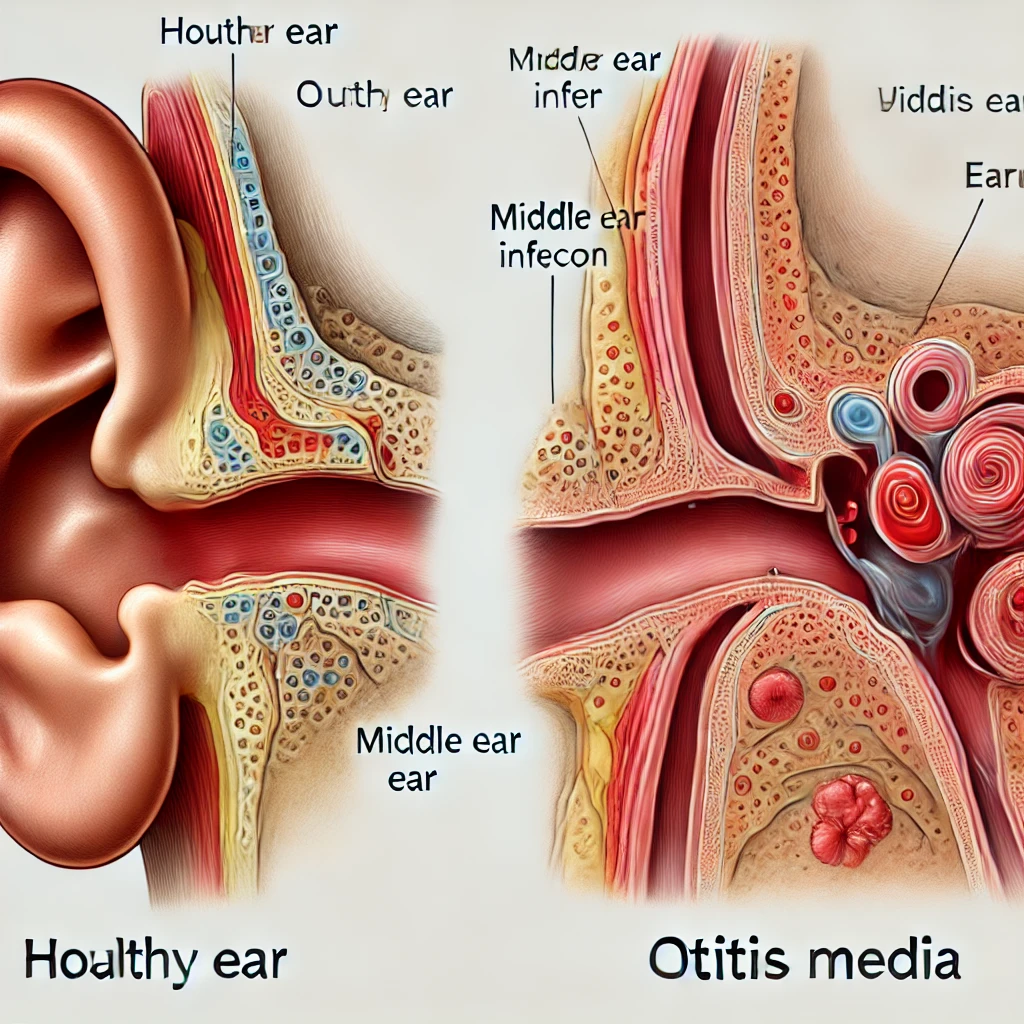Table of Contents
- Introduction
- Symptoms of Middle Ear Infection
- Causes of Middle Ear Infection
- Risk Factors
- Complications
- Prevention
- Summary
- Frequently Asked Questions (FAQs)
Ear Infection (Middle Ear) – Symptoms & Causes
Introduction
A middle ear infection, also known as otitis media, occurs when a virus or bacteria causes inflammation behind the eardrum. It is a common condition, especially in children, and can lead to pain, temporary hearing loss, and other complications if untreated.

Symptoms of Middle Ear Infection
- Ear Pain – Often sharp and persistent
- Hearing Difficulty – Muffled or reduced hearing
- Fluid Drainage – Yellow, clear, or bloody discharge
- Fever – Especially in children
- Irritability – Common in infants and toddlers
- Balance Issues – Dizziness or lack of coordination
- Pressure in the Ear – A sensation of fullness
Causes of Middle Ear Infection
Middle ear infections are primarily caused by:
- Bacterial or Viral Infections – Often due to colds, flu, or respiratory infections
- Eustachian Tube Dysfunction – Swelling or blockage of the tube that connects the middle ear to the throat
- Allergies – Can cause inflammation leading to fluid buildup
- Sinus Infections – Increase the risk of bacteria or viruses spreading to the middle ear
- Adenoid Inflammation – Enlarged adenoids can block drainage and trap bacteria
Risk Factors
- Age – More common in children due to smaller, less developed Eustachian tubes
- Group Childcare – Increased exposure to germs
- Bottle-Feeding – Especially when done lying down
- Seasonal Factors – More prevalent in fall and winter
- Poor Air Quality – Exposure to cigarette smoke or pollution
Complications
- Hearing Loss – Temporary, but prolonged infections may cause permanent damage
- Speech and Developmental Delays – In young children due to impaired hearing
- Eardrum Rupture – In severe cases, the eardrum may tear
- Chronic Infections – Recurrent otitis media may require medical intervention
Prevention
- Vaccination – Flu and pneumococcal vaccines reduce risk
- Hand Hygiene – Helps prevent infections
- Avoiding Smoke Exposure – Reduces irritation and inflammation
- Breastfeeding – Provides antibodies that protect against infections
- Proper Bottle-Feeding Position – Keeping infants upright while feeding
Summary
A middle ear infection (otitis media) is a common condition caused by bacterial or viral infections, often following a cold or respiratory illness. Symptoms include ear pain, hearing difficulties, fluid discharge, and fever. Children are most at risk, and complications can include temporary hearing loss, eardrum rupture, and developmental delays. Preventative measures such as vaccinations, hygiene, and avoiding secondhand smoke can help reduce the risk.
Frequently Asked Questions (FAQs)
Q: How long does a middle ear infection last?
A: Most infections resolve within a few days, but symptoms can persist for up to two weeks.
Q: When should I see a doctor?
A: If symptoms are severe, last more than 48 hours, or include high fever, fluid drainage, or hearing loss, seek medical attention.
Q: Can ear infections go away without antibiotics?
A: Yes, many middle ear infections clear up on their own, but bacterial infections may require antibiotics.
Q: Are ear infections contagious?
A: The infection itself isn’t contagious, but the viruses or bacteria that cause it can spread.
Q: Can adults get middle ear infections?
A: Yes, but they are more common in children. Adults may experience more severe symptoms.

